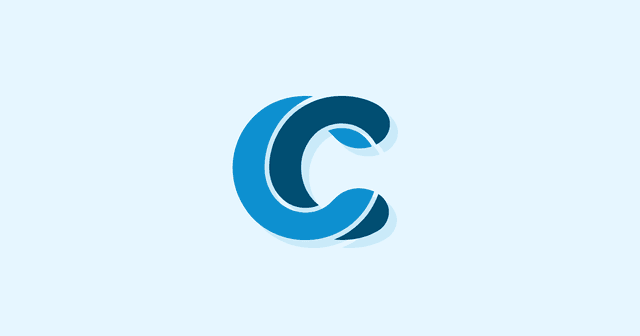Don’t spend too much on new customer acquisition without first maximizing the value of your existing customers.
Getting the most out of your existing customers
Lifetime Order Value (LTV) is an important metric for the success of your online store. A healthy business can’t be sustained on new customers alone. Customer acquisition is always more expensive than enhancing the LTV of your existing customers. You should be focusing on your converted customers as much as you are focusing on new customers.

Upselling and cross-selling
The simplest and arguably most effective thing you can do is implement up-selling and cross-selling. Upsell customers to products that offer you a higher margin and cross-sell products that fit with the customer's cart. If you’re on Shopify, check out the MBC Bundle App or Zipify One Click Upsell. If you’re looking for a more complete solution to cover this and some other things from this article, take a look at Simplified Checkout, which is a more platform-agnostic all-in-one solution for checkout.
Customer loyalty programs
Customer loyalty programs offer less return in the short term, but compared to upsells and cross-sells, which just make an order more profitable, loyalty programs can help you earn repeat customers. This is especially important for consumable products. Offer rewards points, perks for repeat purchases like free shipping or free items, or simply just discounts for returning customers. If you have a consumable product, making it as low friction as possible to come back has a great long-term return on your investment. People are creatures of habit, and if they continue to have a good experience with your store, they would rather stick to what they know works. There are probably several products that you order on a regular basis that you never consider looking for an alternative to as long as the supplier continues to deliver what you expect.
Personalized product pages
Another step you can take to tackle LTV is to offer more personalized browsing experiences. Unlike loyalty programs, this one applies really well to non-consumable products. A great example would be if you owned a photography equipment store. Cameras and lenses are expensive. While customers probably won’t be buying cameras on a frequent and predictable basis, a lot of them will probably come back to browse your site to window shop their next upgrade. Even if they eventually make a purchase again, they’ll probably return several times to browse before doing that.
Take advantage of this. Use their order history to show them products they are more likely to be interested in. For this hypothetical camera business, you’d show them lenses compatible with the camera they bought, preferably any that are on discount. It doesn’t even have to be as heavy-handed as ads or emails. If you know they bought a particular camera, when they click on the lenses category, put some of the lenses for their camera at the top. Knowing what they own is powerful; large data brokers sell that kind of information for big bucks, using data from multiple places and state-of-the-art algorithms to determine what they likely own with some degree of certainty. You’re certain they own something they bought, and you got it for free when they purchased.
This is a more advanced customization. For general search customization and insights that are not customer specific, try Shopify Search and Discovery, but to get truly customer-specific search results, regardless of platform, you’ll need to have a whole pipeline of multiple tools and likely need to hire a developer to make it all work.
Convert one-time purchases into subscriptions
Everyone knows how powerful subscriptions are. A subscription-based customer base is the dream all online business owners chase. Even if your business isn’t focused on subscription offers, there are still steps you can take to get some of your customers converted to subscription customers.
Take advantage of their order history
Take advantage of their purchase history with you to offer subscriptions on consumables. If they’ve bought something more than once, they should be receiving an offer to sign up for a subscription for that product at a discount. Pay attention to the categories of products you offer; if not, all of them are appropriate for subscriptions. It seems so straightforward you’d think that no one would have to be told that, but if you dig through your email inbox or pay attention to your shopping experience on websites you frequent, I bet you’ll notice some subscription offerings that seem really out of place.

Some products are a wasted effort to try to get a subscription or even a repeat purchase for. I’m sure you’ve received baffling ads or emails from Amazon similar to the woman above. They’re still convinced I might want more lugnuts for my car, and remind me they have a nice selection quite frequently, when they should be marketing consumable things like windshield wipers for the car they know I have.
A tool like Drip will help you use order data to market to customers based on their orders.
Renewal frequency is important to get right
That leads nicely to the next point- know what frequency you should offer for subscriptions. With the wiper example, when I buy wipers, I’ll get ads for wipers immediately after I bought them, but not for long after. The algorithm that controls it is not that smart. I should be getting ads for them about a year after I bought my last pair. I live up north, so ideally, they’d market me a new pair of rain wipers in the early spring and winter blades in the early winter.
This example is more retargeting than subscription, but it applies to subscriptions too. Amazon’s ‘Subscribe and Save’ is much smarter than the part of the system that markets things you’ve already bought. If you browse for wipers, you’ll notice the Subscribe and Save option is defaulted to ‘5 Months (Most Common).’ I think that’s a bit too aggressive personally, but their data must tell them that’s the sweet spot. You need to get this part right. Even though Amazon offers a dropdown to pick your frequency, they know that if the first thing a customer sees is every month, they’re much more likely to ignore it because that’s way more than they need. Even though it’s tempting to try to maximize the subscription frequency, it’s much better to err on the side of being too infrequent.
Retargeting abandoned carts
Depending on the type of store you run, a significant percentage of carts are abandoned. For some stores, this is more frequent than purchases actually going through. If you sell more expensive items that are frequently window-shopped, that’s normal. However, if your rates are too high for cheaper, less important purchases, you need to look into making sure something in your checkout isn’t changing your customers' minds.
Visualize your cart abandonment rate in the real world. Imagine if 25% of customers left their cart and walked out of the grocery store. That’s a lot of lost revenue, isn’t it? Those abandoned carts are people who wanted to see the final sticker price. The price of shipping. How long it would take to get there. They were so close. These prospects are worth your prime marketing dollars.
Differentiate by progress
Differentiate between customers who just added items to their cart and left, those who viewed their cart, and those who stopped at one of the checkout steps.
If a customer stops at the shipping step, offer them a free shipping deal. If they stop at just viewing their cart but don’t click purchase, offer them cheaper alternatives to the products they considered. There’s more to abandoned cart retargeting than simply sending ads for the products they had in their cart.
If you’re creative, offer them accessories for the item they didn’t buy. With that camera store example, there’s a chance they bought that camera cheaper from a competitor. It’s a big purchase, after all, so they probably comparison-shopped. You might snag them with cheaper accessories for it. Fewer people will comparison-shop for something smaller, like a lanyard or extra batteries.
Offer an easy customer support portal
Offering a well-made support portal to customers where they can take a lot of actions without the intervention of your support team solves a lot of issues at once. First, the presence of the support portal builds trust. Even if the customers don’t need to RMA something or use the support options, when they see it exists when their delivery tracking is displayed in the portal right after their order is placed, they are more confident in being a repeat customer to your business. It becomes even more important, almost required, for subscription businesses.
The rules are changing
Speaking of requirements, there is a new law in California (Assembly Bill 2863) that requires businesses to let customers be able to cancel a subscription service just as easily as they signed up for it in terms of the number of steps it takes. It requires the use of a toll-free phone line and an online portal for customers to be able to cancel their subscriptions. The FTC has adopted a similar rule, ‘Click-to-Cancel’, nationwide as well, though the California law has more requirements for business. Having a customer support portal solves both of these issues.
Giving your customers more ways to pay
Giving more ways to pay is a simple way to increase trust and stop losing conversions from people with preferred or limited payment options. It’s not just more payment processors. Offering options like Affirm, a popular buy-now-pay-later payment method, is a powerful way to get more conversions. This, believe it or not, is important for return customers as well, especially subscriptions. Customers may be willing to pay through methods that are not their preferred way to pay, but many people like to use their preferred method for subscription payments. Plus, for non-subscription customers, if they know from experience their preferred method they are already logged into and can make a one-click purchase which is supported on your store, they are more likely to pick you again.
The importance of your checkout experience
All of the points above tie neatly into your checkout experience. You should have a checkout system that supports adding upsells and cross-sell. The checkout is also a great spot to offer a subscription option as well. It’s not just about making the most friction-free checkout experience with the least amount of steps to complete the purchase, though that’s important too- those abandoned carts could be due to something they saw in the checkout they didn’t like.

Target them while you have them, and target them when they abandon their cart using your checkout data with email marketing or ads. Your checkout should be the most customized part of your store, which can be difficult since many eCommerce platforms don’t offer much in the way of checkout customization out of the box. You don’t need custom development to make a customized checkout. Sure, that’s ideal, but there are simple plug and play solutions out there. We prefer Simplified Checkout, which has a flow editor and many other features to make your checkout tailored to you without custom development. Whatever you go with, we strongly recommend finding a custom checkout solution that works for your platform.
Share this article
73 reads
Similar Reads








